
Something caught my eye recently that sparked an intense curiosity. In the 2019 CC story on the 1988-91 Buick Reatta that was recently reposted, there is a picture of GM’s Design VP, Irv Rybicki, and in the backdrop are several renderings, with the overarching theme being the familiar wedge shape that so characterized GM’s cars in the Eighties.

I have always dismissed the wedge, and by extension its Studio champion, because some of the cars were quite bad. And in the case of the 1985 Cadillac C-body, wreck-the-marque bad. Maybe the ’82 Cimarron and ’86 Eldorado/Seville committed deadlier sins, but for Cadillac’s bread-and-butter line to have found itself standing directly behind them in the confession line was a major blow at a time when Cadillac needed to successfully battle a growing foreign onslaught.
But as I pondered the many themes behind Irv, and particularly the black sedan directly above him, a Winter Warlock transformation suddenly came over me. For while that car is more suggestive of Design Center’s intent for the ’86 Seville, I couldn’t help but see in it the unrealized potential for Cadillac’s ’85 C-body. And two specific design elements stood out.

The first was the long hood, the result of both a long front overhang and ball-of-foot-to-front-axle, or “BOFFA” as GM calls it. In other words, a transverse engine, FWD powertrain with exaggerated proportions. The second was the much longer front-door glass compared to rear, and wide C-pillar, that together created coupe-like proportions. All of which raised a question: what if Cadillac’s ’85 C-body had been fashioned more along these lines?
Curious to explore answers, I found a good factory photo of a side view of an ’85 Sedan de Ville courtesy Amazon, and began tinkering.

Eventually, I settled on a whopping 7-inch longer BOFFA and a more reasonable 5-inch wider C-pillar that narrowed the rear door glass by same.

Wouldn’t a 7-inch longer BOFFA have been overkill? Not after I recalled my future wife’s ’77 Subaru sedan that I learned to drive a stick on in the early Eighties, and its unusually large trunk that was enabled by packaging the spare tire horizontally, above the boxer Four.
Packaging Cadillac’s standard 5-inch wide space-saver spare tire in the engine compartment would have required that it be mounted vertically, in a roughly 7-inch wide gap between the engine assembly and components attached to the firewall. Assuming that such a space could have been carved out (not a given), the result would have not only amped up the car’s visual drama up front, it would have delivered a noticeable win every time the trunk was used.

Now seeing real potential in the ’85 Cadillac C-body, I began working down a list of other problems that plagued the vehicle. The easiest was to eliminate the sloppy ride and handling by making the ’86 Touring suspension and related upgrades standard equipment beginning with Job 1. Firmer seats and better interior quality would have helped too, but the Touring Sedan’s drab exterior needed to be avoided, as did excessive lower body cladding. This was a Cadillac, not a Mercedes.

Which also meant that alloys were fine, but with whitewalls.

Next task was to figure out what to do with the unreliable 4.1 liter V8, and particularly the block/head metal mismatch. My limited understanding is that this wasn’t the engine’s only problem, but it might have been the source of some of its worst failings. Why did Cadillac put a cast iron head atop an aluminum block? It may have been a simple case of wanting to minimize the engine’s weight given its location above the front axle, which an aluminum block would go a long way towards achieving, while also wanting to minimize engine noise into the cabin, which a cast iron head would help facilitate.
What would have been a better course of action? Probably to make the head aluminum, stop trying to eliminate engine noise entirely, and instead focus on engine sound quality, as is common practice today.

The final task would have been figuring out how to price and market what was effectively a high-end sport sedan. Was it really a Sedan de Ville, the Cush-mobile standard-bearer since 1956? No, and nor was it a Fleetwood or Sixty Special. Instead, I think it was the next-generation Seville, and with good timing given the Gen 2’s dramatic fall from grace at a time when its sales should have been rising. With this suggested new design, Cadillac might have finally offered a credible alternative to the S-Class. And like that car, the goal would have been strong margins rather than maximum sales.
What about a 2-door version? Well, were M-B, BMW and Audi selling 2-door versions of their big cars? No, and for Cadillac the tooling savings would have broadly covered the additional investment needed to lengthen the sedan’s BOFFA and shorten its rear doors. That said, here is a rough work-up of a Fleetwood Coupe with a 7-inch longer BOFFA that depicts what was possible as a next-gen Eldorado. Its C-body interior would have been roomier than the existing Eldorado, and no changes would have been needed to the original greenhouse.

Alternatively, a decluttered Eldorado, or maybe the base Eldorado could have looked like this.

Or the existing Eldorado could have continued, its proportions similar and its exterior design more vibrant, if aging.

And as long as its sales justified it, the big RWD 2-door could have joined the 4-door in staying in production.


Looking at the original ’85 Cadillac C-body program more broadly, perhaps the real opportunity rested with the Cadillac team working as a unified whole. Strategy, Design, Marketing, Engineering, Manufacturing, Finance and Sales all needed to stand together and make the C-body a wedge issue within GM’s top brass, splitting the real players from the dead heads by insisting that a new course was needed to secure Cadillac’s future. Other all-new mid-1980s Cadillac models would be needed too, of which more in due course.
As for Irv Rybicki, I have a newfound respect for him and the concepts that he championed. No, he wasn’t perfect. Nor was Mitchell, and even Earl had his moments. But I prefer to build on their positive contributions as we explore the auto industry’s history here at CC.



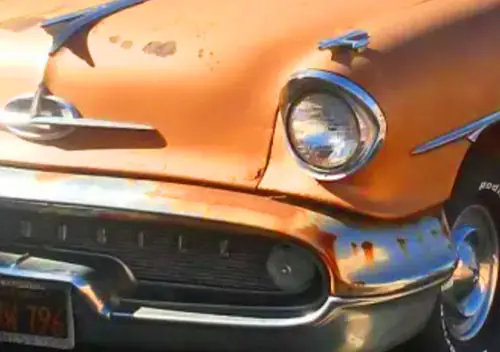
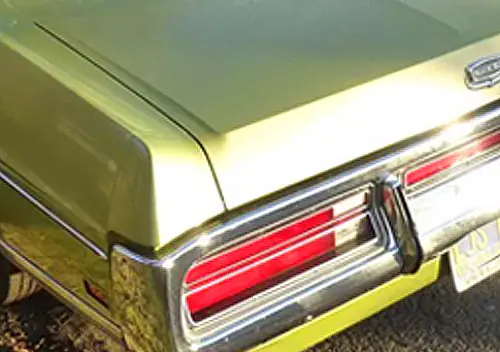
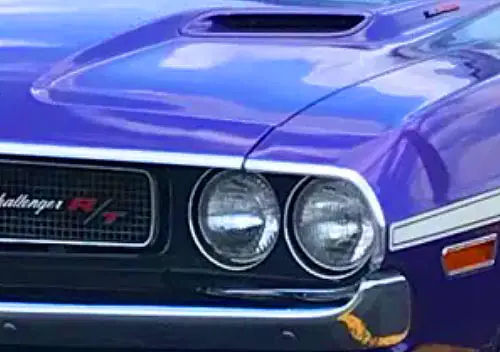

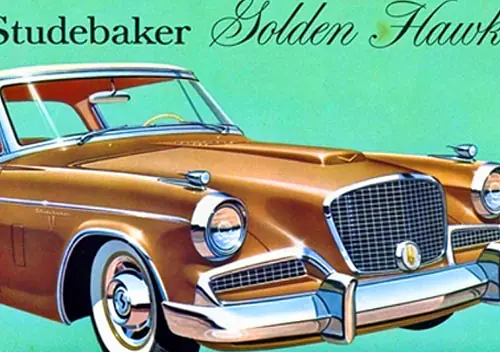
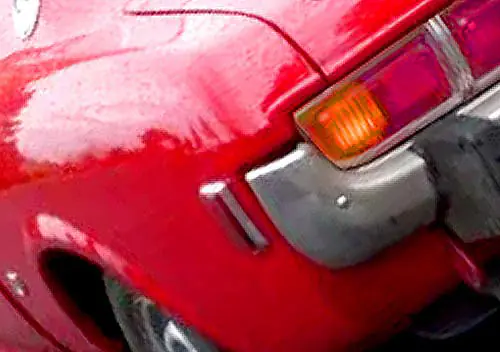
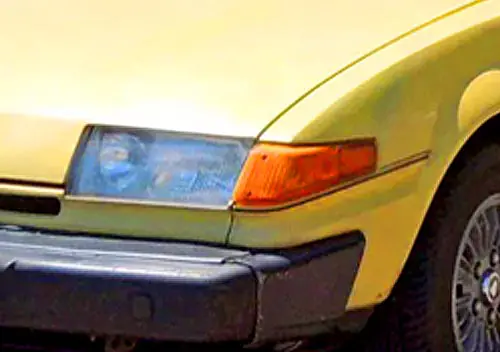
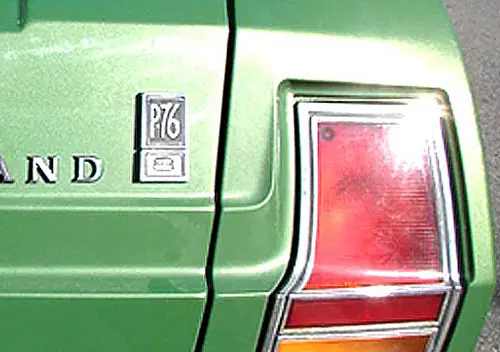
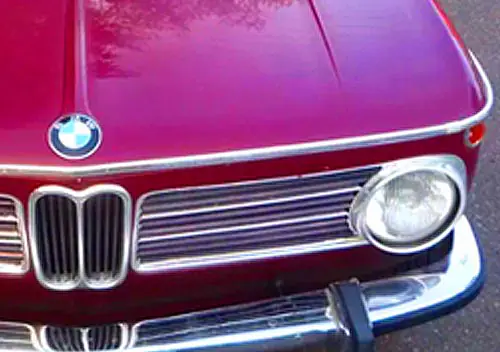
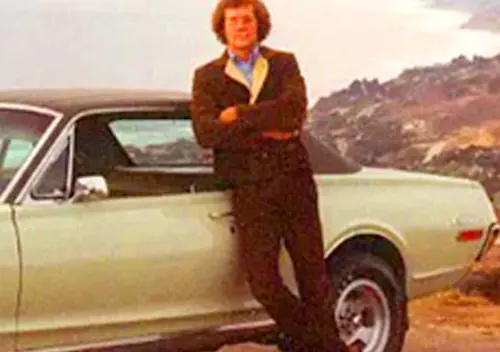

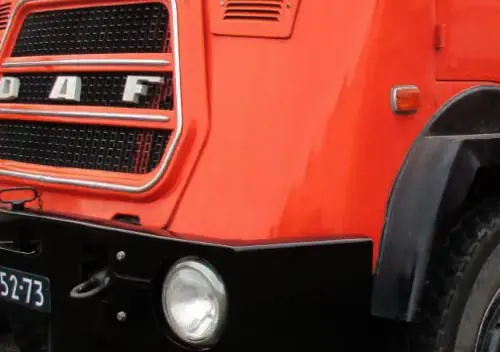
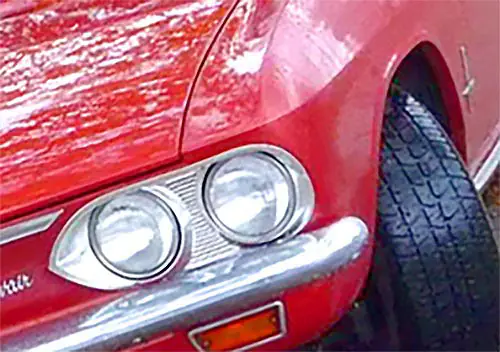
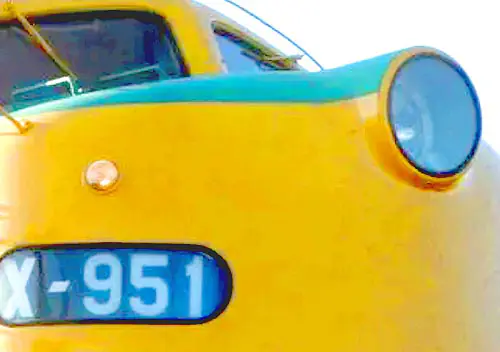
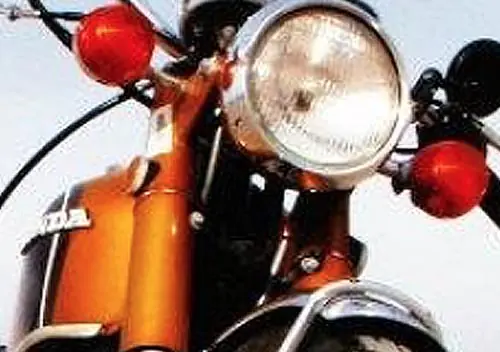
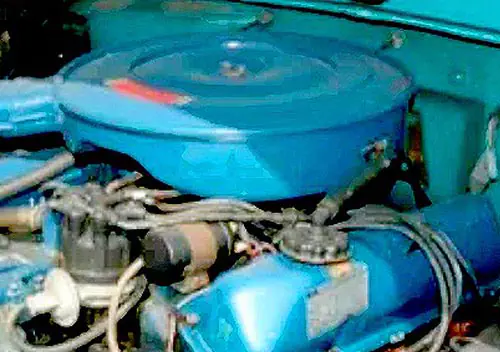
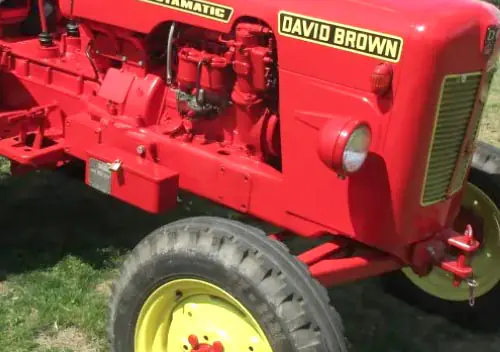
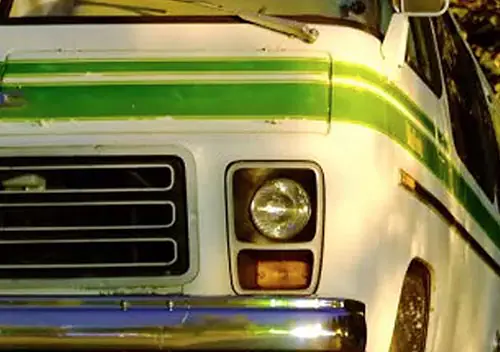

As always a thorough post. RWD full-sized Cadillacs have always appealed to me. As a teen, I salivated over the 58 Sixty Special. Working my way up the ladder through Many Caprice, Pontiac and Buick with a few Ford and Chrysler detours, I eventually arrived at the Standard of the WORLD. My first Cadillac was a 1989 Fleetwood Brougham deElegance. I know technically The Fleetwood name had been stolen by these disgusting downsized POS. There is a classic LINCOLN Town Car ad emphasizing the too similar look of Cadillac, Buick and Olds 98 while The Town Car stood out as a true TRADITIONAL Luxury CAR. MY 89 Fleetwood Brougham deElegance was still Standard of the WORLD, IMO the last real Cadillac. Still I traded it for a 93 Brougham, which was trouble prone with numerous issues including premature rust though of rear wheel openings. So I moved to Grand Marquis and TOWN CARS. Still Thinkin Lincoln, What a Luxury CAR should be and ONCE was. As for the wedge design, NOT my STYLE. Just another of Cadillacs many mistakes. Of course that’s my opinion. Fortunately in the USA we can STILL have our own opinions. Not sure how much longer 😕
Irv Rybicki should have been hauled out of the GM headquarters and had his pension revoked for making a Cadillac Sedan De Ville and Pontiac Grand Am, plus almost every other 1985 GM car look identical. GM did not have the sense to stop the downsizing. The B and C bodies could have made it through the 1980s with just sheet metal changes every 3 years.
His so-called successors have turned GM into a manufacturer of over-priced electric trucks.
I appreciate the fresh thinking applied here, but I still don’t really think there is much that can be (or could have been) salvaged from this awful stew of a car.
Agreed, in my opinion Cad should have gone in the direction of a much more modern, clean, timeless design like this early-mid ’70s concept Cadillac that originally began as a re-nascent LaSalle design proposal. Had they combined cutting edge yet tasteful design with truly contemporary mechanical technology: irs, sohc all aluminium engine, FI, and this ultra-modern yet classic American style, this could have leapfrogged the Germans for sure and maintained the historic GM leadership that was rapidly being squandered. Instead Cadillac clung to obsolete technology, mediocre quality, and lowest common denominator styling with the result that they became irrelevant to the most desirable demographic, their pretense at being Standard of the World now lost forever it would appear.
another proposal:
Cool, a Cadillacized Citroën M35.
The Lasalle design resembles the 92-97 Seville which came out 20 years later.
The LaScala concept’s frontal design did seem to carry forward somewhat into the ’85 Cadillac C-body. As for the LaSalle concept, to my eye the rear is all wrong, as if Citroen was the inspiration.
I do wonder about the who, when, and why behind the decision to go FWD transverse engine with this platform. Must have been one heck of a debate.
I remember when I first saw pictures of the 1985 Cadillac, Buick, & Olds on the C platform while on a business trip to Houston. I could not believe what I saw. Was in disbelief. Instantly knew something was wrong.
And I do remember the Lincoln commercial where the valets get the Olds, Buick, and Cadillac confused where there was no confusion about the Lincoln Town Car. Lincoln must of made a fortune off this misstep.
As the owner of Cadillac Sevilles 82-85 and Cadillac Devilles 1987-89 both with the 4.1-4.5 engines, GM’s insane demand, (in my opinion) to shorten their platforms by turning the engine sideways required obscene fabrication of idiotic bolt on’s like the water pump, alternators, etc, and impossible to access the spark plugs in the rear. While examining the stupidity, it looks like GM did shorten the platform by a measly 6-8 inches. All that work, design, expense, and the few inches they gained did absolutely nothing to improve the car, and did everything to make the car impossible to service. Cadillac isn’t alone as the other divisions did this as well.
I remember those ads, 3speed. They pretty much wrote themselves. The spare idea is intriguing. It would have to be over to the right to accommodate the steering gear. The big problem would be lifting the spare up and over the fender. The hood would have to open to vertical, and you would have to wrestle the tire up about 3 feet. Meanwhile, you are getting dirt all over your clothes.
Great point. Maybe it could have rested behind the passenger side shock tower, to position it as close as possible to the front fender. But the hood might be in the way as you said. Another location would be more inboard and forward but still on the passenger side. The assembly would need to be somehow spring-loaded to lift it up. As with any idea… always the tails!
Or the hood needs to be front hinged, like the Buick version of this body.
Yes!!! Never knew!
The 85s were conceived on a rumor that gas was going to $3 a gallon by 1986…
I would have brought the Fleetwood and DeVille out as well as the Eldorado and Seville, but I would have given them different names to be safe.
If the rumor had panned out, do a refresh and name shift, that way, would be safe.
Sales were so bad, if it hadn’t been fir the big rear wheel drive Fleetwood Brougham, Cadillac wouldn’t be here today.
Intriguing ideas, Paul. And heaven knows, that car needed all the help it could get. And seemingly it wasn’t going to get help from within GM. What a pity though; it takes you with the benefit of forty years of hindsight to make a halfway-decent design out of it. Such simple changes too – now that you look back at it.
What was going on in GM managemnet that they productionised such a gawky, ill-proportioned design? Mark suggests Rybicki being yanked, but management could have/should have rejected this design and sent him back to the drawing board. ‘Try again fella, this time seriously’. They didn’t. Whoever signed off on this program bears the blame just as much.
Could I encourage you to redraw the hunchback Seville with a regular Cadillac-looking trunk? That would seem to have been a better route for them to have taken if they wanted big front-drivers.
Oh, and BOFFA? That sound like the name of a cartoon clown! 🙂
Appreciate the feedback, Peter!
Here’s something that I think I’ve shown before at CC. It keeps the Seville’s greenhouse while trying to become a notchback.
Am sure that Studio found the C-body platform to be a major design challenge, and greatly preferred a RWD layout. That’s why I wonder who championed it.
So far as appearance is concerned, I think Oldsmobile and especially Buick ended up with the best designs given the shared O/B/C greenhouse. I remember seeing the Park Ave for the first time, a ruby red sedan, on the streets of Cincinnati back in what must have been the summer of ’84 when I was still at Xavier. It was sharp, impressive and looked like a quality car for the era. I also recall the Cadillac version being weak and miserable, constantly in a fight with itself.
For this study, I didn’t get into the beltline but do think that it was was too low, and suspect that Studio chose it, or were told to, because it would give the smaller passenger cabin a feeling of spaciousness that was lost in the downsizing.
Also, the rear deck and overhang are a bit short, but I didn’t want to touch them because I didn’t think the program would have approved architectural changes both front AND rear. And the front would have been involved, FMVSS (Federal Motor Vehicle Safety Standards) crash testing standards having begun in the Seventies. Which means the proposed Caddy program would need to shoulder the cost and timing for its own testing.
Too bad they didn’t use your Seville in ’86, but in ’82-3, conventional wisdom was gas would keep going up after Reagan decontrolled prices. Developing that shrunken E body must have cost them a bundle, but they still should have canceled it when gas plummeted in ’84-5 and put the Olds 307 in the existing Seville/Eldo until the HT4100 could be enlarged. Bad timing to shrink as gas prices fell and prosperity grew.
Yeah, that was a tough situation with the unstable gas pricing. A Cimarron launched a year later to get the content right, and maybe with other J-car body styles like the coupe included, would have helped balance Cadillac’s overall CAFE. I did a rough BOFFA extension on a Cavalier fastback the other day, because the long greenhouse made the car look over-cabbed. Wow, as a long-hooded Cadillac it would have looked almost exotic.
Here’s the proposed Seville with beltline lifted up.
Totally agree with Ralph, that’s heaps better than the hunchback.
And that stretched de Ville with the lifted belt looks much more of a piece. Really nice, though the BOFFA-stretch could take credit for most of that.
I always used to look at the illustrations on the studio walls, and wonder why they got it so wrong when it came to production. Other manufacturers could produce attractive cars to pass all your government regulations around this period, just (seemingly) not GM.
Sedan de Ville sales held up pretty well, they were higher than the increasingly underpowered RWD ’80-84 models. It was the Coupe that fell off a cliff in the 80s.
From Wikipedia:
Cadillac DeVille/Fleetwood Production Figures
Coupe de Ville Sedan de Ville Yearly Total
1977 138,750 123,421 262,171
1978 117,750 125,751 243,501
1979 121,890 135,411 257,301
1980 57,790 78,847 136,637
1981 62,724 86,991 149,715
1982 50,130 86,020 136,150
1983 65,670 109,004 174,674
1984 50,840 107,920 158,760
FWD only (I think):
1985 37,485 151,763 189,248 (begin Apr 84)
1986 36,350 129,857 166,207
1987 32,700 N/A
1988 26,420 N/A
1989 4,108 122,693 126,801
1990 2,438 131,717 134,155
1991 12,134 135,776 147,910
1992 8,423 133,808 142,231
1993 4,711 125,963 130,674
Thanks for providing that info, Ralph. You’re absolutely right about the FWD C-body sales holding up initially. I looked at the Wiki numbers this morning and noted that Cadillac’s RWD sedan sales were generally 1/3 to 1/5 that of the concurrent FWD sedan in the Eighties. Which tells me that both models were needed. But I do think that the modified C-body could have reached higher into the market.
I love your work Paul! Nicely done.
Thank you!
What if…GM had spent more development dollars on refining the Unitized Power Package with the longitudinal motor? The transaxle could have been adapted to AWD and 4WD configurations as well as FWD. As for the front spare idea, GM could have taken a cue from Bristol and used the 7″ of BOFFA to mount the spare vertically in front of the cowl so that it rolled easily out of a side door on the fender between the front door and wheel well.
Re: UPP, good question, don’t have an answer and I wonder if there is a book out there that covers the detailed development of these C-bodies.
Maybe the UPP carried additional cost and weight. I considered suggesting it for this write-up but decided to keep things simple by sticking with the transverse engine strategy, in an attempt to identify the fewest and most consequential changes; i.e., the 80/20 rule.
Thanks for alerting me to that Bristol, never knew. The BOFFA on that car appears to be extra long to package the spare fore/aft behind the front wheel. The ’33 Pierce-Arrow Silver Arrow show car had this same set-up and on both sides.
For your suggestion, functionally it’s hard to determine its feasibility given what I presume was an engine cradle that was unitized with the body. Aesthetically, it would not be desirable to have a cutline on the passenger-side front fender. All that said, I would think it would have been worthy enough to include on the initial list of potential spare tire packaging and access solutions.
GM could have taken a cue from Bristol and used the 7″ of BOFFA to mount the spare vertically in front of the cowl so that it rolled easily out of a side door on the fender between the front door and wheel well.
The Bristol was based on a pre-war BMW, and extremely long front ends and side mounted spares were typical then. It became a hallmark of all subsequent Bristols as they never really replaced the chassis, just kept updating the body. But it was highly anachronistic, and the Bristol sold in minute numbers.
Customizers did just this with the Seville, lengthening its hood like that. And these were of course a laughingstock. Surely you don’t think this was a good idea?
I think we may have our answer, if this ’85 Park Avenue cutaway is any guide.
I feel pretty confident in saying the UPP expired because it was too bulky for the downsized packages and because the chain drive incurred more frictional losses than Cadillac, Oldsmobile, and Buick were prepared to accept given the challenging fuel economy targets they needed to hit.
Interest approach, Paul, to the problem of both meeting CAFE standards and retaining Cadillac’s customer base, a real conundrum. Downsizing was a minefield for makes that had for decades equated impressive size with luxury. Those metrics of what constituted a luxury car were evolving rapidly in the 1970’s-’80’s. Cadillac’s styling themes were so firmly cemented in the formal cubic look, it was going to be a major task to present appealing acceptable alternatives without the expected greater length.
Recalling the 1985 FWD introductions, I was aghast GM would have the nerve to present a Cadillac DeVille the size of a Studebaker Lark! The 1977 downsizing was successful largely because it was incremental with still identifying marque-specific styling. The 1985 downsizing as a step too far resulting in styling caricatures.
I’ve wondered whether simply by repurposing and restyling the then current 1979-’85 E-Body Eldorado/Seville platform with engineering updates could have proven to be a more acceptable next downsizing for the DeVille and perhaps Buick Electra. Further amortization through the end of the decade of that platform while fielding downsized Eldorado and Seville on the FWD H-Body platform to let it explore a new styling themes.
Agreed, about them going too far, in shortness. See my comment below; the solution was easy and Cadillac did in in 1989.
I appreciate your efforts to make a better 1985 Cadillac, but increasing the BOFFA like you did is not the solution. Cars, even less than stellar designs like this car, are designed organically, and just arbitrarily lengthening the front like that looks really off; there’s no way GM Design would have remotely approved something like that. It would not have been accepted by the public, as it would have been completely outside the realm of what was “normal”. Cadillac needed to be within the mainstream.
As to that black sedan rendering behind Rybicki, these kind of early explorations were inherently far from reality. Just take a look at Cadillac designer Wayne Kady’s renderings; most were of absurd scale and utterly unbuildable.
https://www.curbsideclassic.com/automotive-histories/the-cars-of-gm-designer-wayne-kady-slantbacks-and-bustlebacks-from-beginning-to-end/
The solution to the problems of the 1985 Cadillac design were easy, and Cadillac figured it out within a couple of years, when for 1989 they lengthened the wheelbase of the sedan a few inches and more importantly, lengthened and smoothed out the front and rear caps, making the whole thing look even longer than the actual amount added.
They should have done that from the get-go, to distinguish the Cadillac from the c-Body Olds and Buick, and given it those longer front and rear ends. There would have been almost no penalty in fuel economy, as a longer body inherently has better aerodynamics than a shorter, all other things being more or less equal, and those longer front end rear caps didn’t weigh much at all; mostly air.
They simply overshot in making the ’85 too space efficient, with its short front and rear ends. That was the major flaw, along with styling details that accentuated its boxiness. All this was mostly fixed by 1989. I’m not bowled over by it, but it certainly is a much better Cadillac.
Let’s take at look at where the proposal’s overall proportions would have landed relative to Eldorado, which was well-received in the market.
Mostly similar, the exceptions being a longer wheelbase and shorter ROH for the proposal, which made the rear look short. The dropped beltline did it no favors either, and Eldo simply has more drama in this area, though at the expense of a more claustrophobic interior.
Front and rear glass touchdowns appear similar, as are decklid top lengths. But the Eldorado’s rear end angles rearward an appreciable amount to the rear bumper, while the vertical proposal looks stubby. No question, the proposal is a giant compromise. That’s the reality with design.
As to what Studio wanted, we can only speculate. Clearly, they did not want the front wheels positioned so far rearward. And Design Center’s institutional memory runs deep. When BEV3 was strategized in 2017-18, Cadillac fought for and got a long BOFFA for the Lyriq versus Blazer. They had put up with enough sharing in this area for too long, and for too many cars, the RWD sedans excepted. Buick tried to use it too but was denied.
Doing what you suggested would have helped sales somewhat beginning with the 1985 MY, but now we are talking about a C+ body shell and longer rear overhang, amortization of which would have been carried entirely by Cadillac. So the financials would change, yet the car would still have dopey front proportions. I think the front was a dead end and suspect that Design did too, and would have jumped at a chance to lengthen that BOFFA.
One goes to war with the army it has, so I’ll stand with the proposal until something brighter shines through the clouds.
Sorry, but even this comparison of yours has massing/proportion issues. Note how the body mass in front of the front wheels on the Eldo is significantly greater visually than the area behind it, between the wheel opening and the front edge of the front door. That changes the whole feel of the front end and makes it balanced.
Your sedan is the opposite: too little mass in front of the front wheels and waaaay too much behind them. It looks like what it is, a crudely stretched car; an anteater. And uncomfortably too much like those custom Sevilles that had their front ends stretched. It just doesn’t work, doing that so simplistically. The whole car has to designed as a piece of sculpture that has proper proportions and balance. Sure, some cars are better than others, but just stretching one end or the other does not solve their issues. It would have to be done organically, to create the proper balance.
I appreciate what you’re trying to do, and no doubt these cars could have come out better, but it takes more than a quick photoshop.
I’ll put my oar in again here, if I may.
This may seem blindingly obvious to those of you in the US, but I don’t understand why GM felt it was vital to downsize the big Cadillac quite so much. Okay, CAFE, I get that, but why didn’t management say “This is our best car. It needs to be impressive. It needs presence, gravitas. It needs to stem the tide of imports. It needs to be a showcase to the world. If we have to pay a guzzler tax on it, so what?”
If the de Ville had been properly proportioned from the start (as they eventually did, or as Paul does here) on a longer wheelbase, that would have set it apart visually from the Olds and Buick (which were no beauty queens either, but that’s another issue), and made for a much more attractive car.
What was the social climate in the US then regarding economy? Was it really that much of a stigma? Would a slightly poorer economy figure have made that much difference to a Cadillac customer – really?
GM made a corporate commitment to not paying the gas guzzler tax. Given its position then as the largest US automaker and the political environment and the valid concern about fuel economy, I think it was the right stance to take, at the time. And I’m sure they did it out of concern about their image, publicly and politically.
Cadillac had long stopped seriously trying to be a world class luxury car. The world had moved on, and by this time a large swath of buyers too. They could now afford something with greater prestige value; Cadillac’s had been eroding for decades.
GM’s business model since the great Depression had been to make cars in volume, and on sharing one or more body shells. There was no way they were going to go back to the 1920s approach and do a modern V16 or such. Both Ford and GM tried this in the ’50s with the MarkII and Eldorado Brougham. These were intended to be uber-luxury cars and compete with the world’s best, but they both flopped and lost a lot of money in the process.
The investment in a unique high-end Cadillac would have been vast and undoubtedly not one they could ever hope to recoup. Mercedes had been leveraging their way up for decades, but able to share much of their technology with their cheapest cars. Same with BMW and others. GM was never going to be able to do this; a standalone super-high end car that shared little or nothing with the rest of the GM line was a rightfully seen as a black hole. Which it would have been.
I totally understand why folks in Europe and Australia and such ask this question repeatedly: why didn’t GM make a car like the big Mercedes or BMW? Well, there was a lot more money in not doing so, and by the time this all happened, in the mid-80s, GM’s market share was already in serious decline.
Sure, Toyota did it with the Lexus LS400, but the huge investment to develop it was essentially paid by Americans! Seriously. The Voluntary Import Restraint agreement of 1986 allowed Toyota and the other Japanese to drastically jack up their prices in the US due to the demand being so much higher than supply. Toyota was banking massive profits from that, and they also saw they were going to have to move upmarket. So they invested some of those profits in developing the LS400 and created Lexus. Much more profit in each Lexus than in each Tercel.
I could go on, but that’s enough for here. The dynamics of the market had favored imports for a very long time because influential Americans on the coasts saw them as being more upscale, smart and having more prestige. If you wanted to not look like a dork within growing segments/groups/tribes, you had to buy an import.
Which in a way is the problem with proposals like in this post: by 1985, Cadillac was a dead man walking. It just didn’t know it yet, nor did some of its shrinking pool of loyal buyers and fans, but the reality would hit soon enough. Cadillac’s styling improved very significantly in 1992 or so after Chuck Jordan took over from Rybicki, but it did little or nothing to halt the terminal decline.
No, Cadillac wasn’t a dead man walking in ’85.
But simply pulling ahead the ’89 wasn’t the optimal fix. From ’85 on, the FWD cars didn’t look right, including Jordan’s bloated versions. And sales just kept trending downward.
Why? In part, because they all looked like they hit a curb at high speed, and the front wheels got pushed in. The ’89 generation was the best of a bad lot. But there was good engineering in the body and chassis, which was a start.
Paul, I’m just not seeing the significance of Eldo’s front door cutline. I showed you the key proportions, and I get your arguments, but only to a point. Stand back and look at the cars, including what you are proposing. Is it really the best that Cadillac could have done with that C-body?
I tried to dial in more Eldorado on this latest image, including bringing the beltline up. A work in progress.
Welcome to the world of design, gentleman. It’s not easy, and vehicle strategy is even harder.
No, Cadillac wasn’t a dead man walking in ’85.
The following chart begs otherwise. It starts in 1985.
The real problem for Cadillac, and one that is not easy to envision fixing with any simple product change, was that the rot had set in more than a decade before that: Cadillac was losing its luster in the really high tax bracket set by the early ’70s, which the division’s massive sales expansion didn’t help at all. In the short term, Cadillac was making money hand over fist, so they didn’t see a problem, but most of their decisions throughout the decade served to alienate the kind of people who were either buying BMW and Mercedes or beginning to covet them. By the mid-’80s, Cadillac had backed itself into a kind of evolutionary cul-de-sac, which the backlash from traditional buyers to the downsized C-body and E-body Eldorado served to underscore. If Cadillac had led with the 1989 versions of those cars, it might have softened the plunge, but I don’t think it would have reversed it.
Aaron: Agreed, and I’ve been saying all of that here like a broken record for almost 15 years. And I’m a bit tired of repeating endlessly.
Cadillac was losing its luster in the really high tax bracket set by the early ’70s
It started a fair bit earlier than that, at least a decade earlier. I saw it happening in the early ’60s; a doctor and a professor on our block in Iowa City both bought new Mercedes 220SEs in about 1962-1963. That’s just one block, in Iowa. You should have been in LA or such at the time.
Here’s a CL road test of a 1961 MB 220SE, and the line from it that I used for the title was “It’s Easy To Understand Why So Many Cadillac Owners Are Switching To This Car”
https://www.curbsideclassic.com/vintage-reviews/vintage-car-life-road-test-1961-mercedes-220-se-its-easy-to-understand-why-so-many-cadillac-owners-are-switching-to-this-car/
Mercedes sales in the uS had tripled between 1958 and 1961, and the demand consistently was greater than the supply.
Why? In part, because they all looked like they hit a curb at high speed, and the front wheels got pushed in.
That certainly didn’t stop Audi from beating Cadillac. I think you’re putting too much focus on that one issue. It’s essentially inherent with FWD cars.
Is it really the best that Cadillac could have done with that C-body?
Unless Olds and Buick were also going to get that nose job, extending the front end only for Cadillac would have been an extremely expensive undertaking. These were true unibodies, no front subframe like the gen1 Seville, which made it quite easy for customizers to extend that front stub frame. In a true unibody, the very powerful forces acting on the front suspension have to be taken directly by the body, which requires a very complex and rigid structure from the cowl along the inner fender. Extending that would require massive engineering and changes to the most complex and expensive part of the body. Lengthening the wheelbase is child’s play compared to that.
I’ve never been a fan of these C-Body Cadillacs. They have real design limitations. But they are the product of a major corporate decision to downsize, lighten and convert to FWD the C Body, and this massive program also involved the LeSabre and Olds 88. GM was not in the business of bespoke bodies. Yes, of all the ’85 C Bodies, the Cadillac is the worst. But they fixed the biggest issues within a few years, although it still wasn’t my cup of tea. But then no Cadillacs have been since about the mid-’60s.
Paul, I appreciate your taking the time to engage in this, and greatly respect all that you do and have done!
What I am after is a rigorous interrogation of what happened within Cadillac that sent it into a downward spiral, and the level of awareness that would have been needed to send it in the opposite direction.
Our timing is actually around 1980, and even a few years before, when the key architectural decisions were being made. So that’s where we need to place ourselves.
Why such an interrogation, besides enjoyment? Amongst other reasons, training for comprehending what is needed to turn the EV situation around, because at present, bad decisions continue to be made, Detroit Metro is a mess because of it, MBA schools continue to churn out unprepared future automotive leaders, and only some level of industry experience, together with history fully illuminated, can we begin to fathom and forge a path to a better future.
Cadillac is an almost perfect study because it was a small but whole team, which can be a powerful agent for change. And it found itself operating within a company that was trying to reinvent itself, in a market that was morphing into something foreign to GM, and facing regulations that would directly impact key decisions.
I think one of the first things that Cadillac needed to determine was what kind of brand it wanted to be 10 years hence. Naturally, it would focus on Mercedes, in addition to its traditional rival, Lincoln. But the company within which it operated would be more focused on volume brands such as Toyota, Honda, and maybe VW. So an informed and vocal Cadillac leader and team would need to advocate for Cadillac when it came time to define the new C-body architecture.
Of course, we know what Cadillac would have likely advocated for: a RWD drivetrain. And if we leave almost all other factors just as history recorded, we can reasonably predict what the ’84 (delayed to early ’85) Cadillac could have looked like, it’s 110.8-inch wheelbase extending in length by maybe 4-inches, without altering the hood. I included the wider C-pillar, because Cadillac dialed it in for the 1985 Fleetwood Coupe and made it optional for CdV.
Let’s give the 114.8-inch wheelbase car the Touring Suspension, firmer seats and an all-aluminum OHC 4.1 V8. What do we think? Would it have turned the needed page for Cadillac? If so, we can explore the level of awareness that the Cadillac team would have needed to get to this point. And think about how to keep the old Cadillac buyers happy at the same time.
No. The problem began too much earlier than that to make a big difference. I do think that Cadillac had a window of opportunity with the 1976 Seville and Eldorado, but they didn’t take it: The awful Wayne Kady Seville (which Bill Mitchell apparently shoved down Ed Kennard’s throat on his way out the door after Kennard had rightly rejected it for the Eldorado) absolutely devastated the credibility of the Seville for a decade, and Cadillac couldn’t resist trying to pad the margins on the Eldorado with schmaltz, which ensured that people who saw the Eldorado as a promising step in the right direction in 1979 quickly dismissed it as another tacky domestic luxury car for retirees to drive to Florida for the winter.
The dilemma Cadillac management faced in the ’70s was that what the corporation cared about was profit margins, and the kind of preoccupations enthusiasts have with brand integrity or long-term plannings only got traction to the extent that they made money. Cadillac was making huge amounts of money in the ’70s, in part because when Bob Lund came from Chevrolet, he wanted to aggressively expand production and sales. That’s what GM rewarded, and while the trends that would eventually be the division’s undoing were already apparent, no one was going to seriously advocate for any radical changes in direction or philosophy that might kill the golden goose.
Also, the elephant in the room is that Roger Smith and senior corporate management had decided that individual divisions with divisional autonomy were old-fashioned and unprofitable: They said, “Why are we wasting all this money letting five or six separate divisions independently develop cars that are pretty much the same? Wouldn’t it make more sense to establish one set of corporate templates and then just customize those a little for the different brands?” The idea of letting Cadillac or an other division be “a small but whole team and powerful agent of change” (even to the extent they had been on earlier programs like the 1979 E-cars) was precisely what the Smith organization was intended to stamp out.
Paul, Here’s the real problem, and it was a huge conundrum, and one for which there was no real solution: As I pointed out in another comment here, already starting in the late ’50s and early ’60s, educated, higher income professional and just wealthier individuals started buying Mercedes. A Cadillac of the times, and in the mid ’60s they were objectively excellent cars, lost its appeal to these buyers because a Mercedes was seen as having greater quality, technical excellence and prestige.
These folks were the influencers of their times. And there’s nothing Cadillac could do about it. Their reputation as a traditional American big car was utterly cemented in the public’s perception. And Cadillac mostly looked the other way; why not? Sales were still expanding, although that itself was a negative, diluting their image further.
The Mercedes (and eventually BMW) boom just kept growing, because folks in certain professions, locations, and similar inclinations all wanted to be with the in group. And in these groups, if you didn’t drive one of the “in” imports, your were seen as behind the times, even a bit of a loser.
Cadillac was doomed, starting in the early ’60s, even though they were doing fine financially. It was just a huge cultural shift towards imports, and of course it didn’t just happen in the upper price ranges. The same thing started to affect all domestics, with a few key exceptions (Taurus, Caravan/Voyager/Jeep Cherokee).
Cadillac could not do anything credible to win these import buyers back. I wrote up an alternate reality piece on a 1965 Seville, but it was just mostly a joke. I don’t believe it would have worked. I assume you’ve seen it:
https://www.curbsideclassic.com/alternate-history/automotive-alter-history-1965-cadillac-seville-the-car-that-beat-back-mercedes-and-became-a-global-best-seller/
The best analogy I can come up with is Kodak and Xerox. They were once giants, and then slowly and steadily faded away. Things change; tastes change, what’s in changes.
GM died and a new GM arose from the ashes, having shed much of the dead weight. They’ve focused on very profitable niches (trucks) and Cadillac is hanging in there, having morphed quite a bit. It seems like the Lyriq, after years of delay, is finding a bit of a niche. Good for them. But realistically, the old Cadillac essentially died, even if it didn’t truly. And I have felt it was inevitable since a very long time ago, as in the mid-70s. having moved to Southern California then, I saw it unfold in real time, just earlier than eventually in other parts of the country.
I was a Yuppie at the time, and I would have died of embarrassment if someone had given me a Cadillac. But I understand that was not the case yet for some time in other parts of the country.
There was no fixing Cadillac. It had its glorious day in the sun and it was time for it to go. It’s how things go.
Ask Porsche, Mercedes and BMW how things are looking for them in China. Now the shoe is on the other foot. They are dying over there.
Excellent arguments from both of you.
It’s hard for me to get my head around resurrection being ruled out when it comes to people. And Cadillac, at the end of the day, was and is simply a group of people running a brand.
Hyundai was a goner in the Eighties because of awful product. My in-laws had a sedan whose transmission literally fell off the car! But look at them now. Determined people brought them back, so it IS possible.
And let’s talk about that Taurus, another car that wasn’t supposed to come from a company like Ford. But it did, and so did new customers. That Ford later snatched defeat from it was a different matter. I remember when CU gave the ’86 Taurus a best car tested review. Why couldn’t Cadillac, or any other brand, achieve a similar result were they to put out a great product?
As for the Lyriq, I don’t think its profitable. I watched it come together in the advanced studio, and was impressed with the team that pushed for it. But any success it is having in the market is coming at the expense of GM. The company needs serious help, because I don’t think they have it within themselves to win in the EV space in the next 10 years. They are missing the fundamentals that make for a solid business case.
I think I might actually be less bearish than Paul here, but I nonetheless think that the issue was that by the time the alarm bells started going off for Cadillac, they had already lost so much ground for the kind of nip-and-tuck you’re proposing to make much difference. The window of opportunity, as I see it, would have been during the period between the launch of the Seville and the launch of the 1979 Eldorado, during which time anyone who said “Hey, maybe we need to do something different” would have been viewed as a lunatic.
Also, I think that the downsized 1985 C-body ranked much lower on the list of product-related blunders than the 1980 Seville, the Cimarron, and the 1986 Eldorado and Seville, although it suffered from their mistakes. I agree that the C-body’s styling miscues were avoidable, and if Cadillac had led with the 1989 version, it would probably avoided at least part of the backlash from Cadillac traditionalists, but I don’t think there was any way any nip-and-tuck of that car was ever going to appeal to Boomer yuppies. Part of the reason was that the C-body had to carry the baggage of the bustleback Seville and the Cimarron as well as its own. After the credibility-smashing foolishness of those two cars (which were still on sale when the C-body arrived, why would any status-conscious yuppie ever take Cadillac seriously again?
The Taurus was in a very different segment with different expectations. It was in a class where all-around competency and decent value for money were far more persuasive. Luxury cars are bought primarily for prestige, and in that respect, Cadillac was in a weak position — weaker, I think, than Cadillac realized. It was nowhere against the high-end imports, and if people were content with the prestige offered by domestic brands, it had to contend with its own Buick and Oldsmobile siblings, which were cheaper.
Aaron, I think I get where you and Paul are coming from, appreciate your staying with the discussion, and will wrap it up.
What I think I am hearing from both of you is that the last work-up on 113.9 wb, shown below, with roughly the same dimensions as the ’85 M-B 380SE would have been a non-starter for Cadillac. In other words, few sales taken from M-B and few new converts to Cadillac.
Just to lay out a plausible powertrain for this vehicle, let’s give the car the UBB FWD powertrain from previous gen Seville per Thomas J’s suggestion (except the 4.1 V8 would now have an aluminum head) so that the O/B’s FWD C-body could be shared, with Cadillac differing only in the C-pillar width and rear doors. But under hood and in the BOFFA, the Caddy would be completely different to better position the front wheels for appearance, change the weight distribution to be not quite as nose-heavy, and maybe reduce torque steer.
The proposed ’85 Seville would not list for $23,259 as the original ’85 slant back Seville had, but instead for around $30,000. But it would come fully loaded and maybe include a driver’s side airbag, in addition to anti-lock brakes. And it would be a 5-pass vehicle only. For reference, the similarly sized M-B 380SE listed for $42,730.
The old RWD Sedan de Ville would be kept in production, priced around $18,720 for 1985. For reference, the actual FWD ’85 SdV was priced from $18,571.
Am also curious what you both think of the 2025 Cadillac Celestiq EV ($340,000) and Lyric EV ($58,595)? Will they finally position Cadillac amongst the world’s best? Not in prestige or consideration, just vehicle competence.
Here’s a version with only a 3-inch wheelbase increase, everything else held constant. 113.8 wb. more like what GM would have chosen, not being one to move the wheel way forward for RWD cars.
It’s important to understand that there was substantially more at stake for GM than simply having a gas guzzler tax on individual models. EPCA, the law that created the CAFE rules, gave automakers less than 10 years to essentially double their average fuel economy, increasing in annual increments. Failing to meet those targets carried very substantial civil penalties, originally set by statute at $5 per tenth of a mile per gallon per car. For example, in the 1979 model year, when the CAFE requirement was 19 mpg, GM built 5.37 million cars; had they missed the target by 0.3 mpg, it would have cost GM a civil penalty of $80.56 million (something close to $350 million in 2025 USD).
These penalties were entirely separate from the gas guzzler tax imposed on an individual model whose fuel consumption exceeded a certain threshold (which was imposed under a later, separate law, the Energy Tax Act of 1978). The gas guzzler tax is an excise tax imposed on the manufacturer or importer, which they can and do pass along to the consumer. For luxury cars or high-end sports cars, this was incidental — it was only money. The bigger risk for the manufacturer was that those models would diminish their CAFE enough to result in millions of dollars in civil penalties.
This was a particular issue for GM because in the late ’70s, it had more than half the U.S. market. It was one thing for Ferrari or Aston Martin to shrug off the (considerably smaller) penalties as the cost of doing business, and no one was going to get too upset about it, but if GM flaunted the law, it would have read to Congress as defiance, and the response would probably have resulted in even stiffer sanctions on top of the seven- and eight-figure liability already established.
Contrary to popular belief, some GM cars of the early ’80s WERE subject to the gas guzzler tax: The Cadillac limousine, the B-body Impala/Caprice with the 350 police engine (which was exempt from the tax if and only if it was actually sold to a police agency), and V-8 Caprice/Parisienne wagons. However, the first was sold in very small numbers and the second wasn’t normally offered to civilians, so only the last was numerically significant.
Thanks Aaron, a great education.
Like today, I assume that there were people in the company that tracked the aggregate financials, with the impact of various fines weighed against the profit margins for the vehicles, and a final bottom line calculated. Some car makers, and perhaps all now include a greenhouse gas line item in the business case for every vehicle line, which is partly how EVs are “afforded” in the portfolio.
I wonder if they did something similar with CAFE back in the Eighties. Cadillac was a small part of the mix with respect to volume, but presumably had high per unit margins. Was an SdV-priced FWD Cadillac C-body needed to maximize the brand’s or company’s profitability? I don’t know, but clearly they felt it was back then. And yet, things got off the rails for Cadillac and the company for other reasons. But at some level it was all interrelated.
A take-away of this study is a broad historical pattern: global commodity prices and governmental reg’s change over time, sometimes slowly, other times abruptly, and car companies need to be very careful not to over react. But they also need to constantly innovate and be creative, especially when dealing with regulations created by people who never worked for a car company and thus don’t fully understand how they work, or the customers that they serve. Today’s fluid EV landscape is an example, as were oil prices in the Eighties.
I don’t think I can overstate how politically dangerous it would have been for the largest U.S. automaker to openly defy a federal law that had passed both houses of Congress by comfortable margins during a Republican administration. Aside from the immediate statutory liability, which was very considerable, GM had a great deal to lose: Their senior management had lived in fear for decades of unfavorable federal intervention (e.g., anti-trust action), to say nothing of the enormous bad publicity they would be facing. Frankly, the idea that GM SHOULD have openly defied Congress so that… what, the DeVille would have slightly better proportions? is not one that I’m interested in entertaining even as a thought experiment.
With regard to CAFE, GM was NOT overreacting. To the extent that Cadillac miscalculated in terms of how much they had to downsize, it was that they presumably had to calculate how they could meet their fuel economy goals at their late ’70s production volume or greater, which was a lot. In 1979, Cadillac built 378,223 cars (about 7 percent of GM’s total passenger car volume that year), of which 257,300 were the C-bodies. They undoubtedly had whole rooms full of financial analysts plugging numbers into the CAFE formula to see how much they’d have to improve fuel economy to hit the targets at 275,000 or 300,000 units a year, and because the C-body was shared with Buick and Oldsmobile, there were probably endless meetings to coordinate how much the C-body was going to have to shrink to get them where they needed to be.
After studying more carefully the feasibility of creating a 7-inch gap to fit the spare underhood, I think a 5-inch BOFFA extension and with spare kept in the trunk, would have been a worthwhile investment for Cadillac wrt appearance. And the extended crumple zone would increase occupant safety in a frontal. I can envision this as a popular $30,000 Seville, were all the other items in the article attended to, and ABS and a driver’s side air bag included. It would be neither a Mercedes nor a RWD Fleetwood, and instead a competent ‘tweener.
Cadillac’s CAFE would need to be dealt with through other means.
One styling avenue coming into currency at the time was more rounded surfaces such as those on the ’83 Thunderbird/’84 Continental Mark VII. GM was never shy about reprising earlier themes, 1940’s Cadillac might have been referenced as to how an aerodynamic, yet formal look could have been accomplished.
Cadillacs, which had a reputation for bulletproof engines for decades, squandered that within a few years with that succession of lousy engines. Nothing sours brand loyal customers faster than that when it comes to repeat purchases. Just those ill-conceived decisions drove legions to import luxury makes, once satisfied, never to return. No amount of appealing styling was going to change their outlook.
I agree, Steve. Rounded surfaces were an opportunity for Cadillac in these years. The ’86 Seville’s front is a work of art imho, and the rear is great, too.
Firebird/Camaro and Corvette were the biggest beneficiaries of GM’s wind tunnel efforts in these years. For the rest of the cars, the sheer look was taken too far, though that’s coming from someone who prefers rounded forms. Wish Engel hadn’t retired from Chrysler when he did. Loved that guy’s ever-improving sculpturing.
This one just angles the rear. More cost, and maybe or maybe not worth it. The clinics would have helped them lock-down an optimal design.
That black car behind him looks, to me, just like a Zimmer Quicksilver.
Very interesting, Aaron. And a real conundrum.
Who was leading the FWD charge in the mid-Seventies. I recall reading a long and very educational CC on this, probably from Paul, I can’t remember, about what happened inside GM. Whoever that person or group was, they were a focal point of change that Cadillac would have needed to connect with early on and help guide. Now we’d have Mitchell involved, of whom I am not a huge fan. But he did establish a new design path with the ’75 Seville.
Re: the earlier comment from Thomas J about the UPP, am now wondering if that FWD system could have packaged in this 113.9 wb car. And how would it have been received by the market vis-a-vis M-B?
Lots of questions…
In all of this I never pointed out the single worst element of these: the absurdly small wheels and tires, and the cheap fake wire wheel covers on them. Undersized wheels and tires make a car look weak; if you’re even something of an enthusiast or looking for a car that’s going to have some handling prowess, seeing these tiny wheels and tires in those big wheel openings are just atrocious.
I took this picture years ago, and it pretty much says it all. Does this come across as a dynamic new upscale car?
And here’s the other vivid comparison. Which car looks vastly more dynamic and portends the future direction of car design? That goes for the interior as well as the exterior.
I’m sorry, but these were a lost cause. And the ’86 Seville was just that much worse, never mind the Eldorado. 1985-1986 was one of the key turning points for Cadillac, along with some others Aaron and I have mentioned.
Paul, firstly I want to thank you for getting me to change course! Design is an iterative process that never really ends, it just gets halted when Studio’s surface release date to Engineering arrives. I was hoping for a good debate, and was very appreciative when you, Aaron and my good friend Steve (58L8134) all unloaded your clips, aimed directly at the proposal.
I also learned something, if I read your comments correctly: after earlier suggesting a RWD version of the car and with an OHC version of the 4.1 V8 now with aluminum heads, and with the Touring package (15″ alloys and blackwalls included) and firmer seats, to still get a rejection from you and Aaron suggested to me that neither of you had faith in either the quality/reliability/competence, or the styling, or both, and there was nothing that could remedy it short of pulling the 3-pointed star off the E-class and pasting on a wreath and crest. 🙂
You just pointed to the original car’s problematic appearance, and on this I have two thoughts. The first is that the industry and consumer were both in the process of retiring the sheer/boxy look throughout the Eighties and into the early 90s. It’s styling theme had had an incredibly successful quarter century run, beginning with the ’61 Continental.
To give the ’85 Cadillac C-body some context, and reconcile why it was so sharp-edged while the ’86 Seville/Eldo that launched the following year was thoroughly softened, the reality, as you know, was that the C-body was supposed to be an ’84, but got delayed to become a very early ’85. And its development schedule probably preceded the ’86 Seville/Eldo by 3 years rather than 2 given the fact that these were the first cars on the new architecture, and thus required extensive, time-consuming testing. So in the Studio’s world, C-body clays were coming together in a timeframe more like an ’83MY launch.
Well, 1983 was also the same year that the Camry arrived, a game-changer in the compact sedan segment. And… with 4-square styling that didn’t seem to bother anyone. My dad bought a used one at auction later in the decade down in Butler, PA and he and I went to pick it up in Andover, OH just north of Y-town where we lived. He was so excited driving it back that he pulled off Route 11 and had me switch cars so I could experience it. Darn good car, a revelation in fact. And I really didn’t think twice about the styling, seeing it as a square like Volvo/GM/Chrysler/Audi/VW//Lincoln/Marquis/Crown Vic rather than rounded like the Accord, which I viewed as a baby Benz at the time.
The new FWD Toyota Corolla was another early/mid-Eighties box, as was Volvo’s 700 Series. And Camry didn’t get rounded until ’87, Corolla ’88, and it all came in stages, with the 3rd gen Camry getting even softer.
As for the S-Class, I loved its styling, particularly the new to U.S. ’81. But in between it and the ’86 300E launch, a problem arose for M-B: the all-new ’85 Audi 5000, which burst onto the scene and flipped everything upside down. I loved that car and from that point forward, saw M-Bs and becoming more and more old folks, or at least conservative folks’ cars. BMW was a bit more more youthful, which helped position it in between the other two. It took M-B well into the next millennia to fully embrace aero, and I love the mid-2010’s cars in particular. And of course, Audi dialed the aero back with the ’92 100 that I owned.
So circling back to the ’85 Cadillac Seville C-body proposal, I think is shape would have still had currency in the mid-Eighties, but needed a major reskinning in ’88 to pick up the styling of the actual ’86 Seville. And speaking of the proposal, here’s where I am at:
– Reject my original idea of 7-inch BOFFA and spare under hood.
– Reject Paul/Aaron/others idea of pulling ahead the ’89 major refresh.
– Add 3 – 5 inches to the original SdV’s BOFFA (work-up below shows 3) and market it as the new ’85 Seville.
– Make Safety a major part of the marketing campaign by using the extra space under hood to improve frontal crash performance via lengthened crumple zone, and by making a driver’s side airbag and ABS standard, as the S-class did beginning in 1984.
– Forget the E-Class, instead aggressively go after the S-Class wrt value, and don’t be ashamed of styling. Make that last tango with the box a memorable one.
Here’s the 3-inch BOFFA version on 113.8 wb, and now with 15-inch wheels. Still fake wires but am only trying to show the proportions. Studio would have figured out where in the 3 – 5 inch range the BOFFA needed to land, dialing in something longer than O/B from the get-go, and pushing the early clinic results hard when it took its case to the powers that be. And it needed bring the rest of the wagons into the circle, as I mentioned at the end of the story.
While that car was being developed, Cadillac also needed to begin looking for other opportunities, and the fast rise of the 1980 AMC Eagle should have been front and center, especially given GM’s vast parts bin. Topic for a future post.
After reading through all the perspectives, I was reminded of my uneasy feelings about what was happening to Cadillac in the 1970’s-’80’s. It was becoming obvious by the Mercedes and BMWs being driven by the college professors and other professionals while Cadillac and Lincoln were rapidly losing their cache among the highly educated class. Completely alienated were the young urban professionals, i.e. ‘yuppies’ who wouldn’t be caught dead driving an American luxury car. Who were left were an aging demographic who still held Cadillac in some elevated regard, though looking increasingly out-of-touch, who were to be disdained and denigrated by the sophisticated cognoscenti
.
With all this unfolding, Cadillac finally arrives at an impasse: lost stature and prestige with an affluent, influential clientele and rejection by an ascendant next generation of that clientele. Clashing was the corporate component sharing mandate required to generate major sales volumes from a diminishing demographic who expected their luxury cars at a moderate price with traditional styling. A classic no-win situation.
Cadillac hadn’t seen such a challenge since the Depression. They got through that nightmare by tapping into GM’s huge corporate parts bin, creating new models, in new sizes, in new segments, and ushering in new vehicle proportions. What was the result? Within 10 years they were on top.
That was their situation again at the dawn of the Eighties, so why not do it again?
That Cadillac guy responsible for the Cimarron has been sliced and diced every which way, but that was the kind of stuff they needed to experiment with. He got greedy and launched a year too early, and maybe could have added the 2-door and 3-door fastback to take full advantage of the interior investment. But they did need the CAFE boost, in addition to some new blood.
The days of Cadillac getting 90% of its volume from a single sedan and related coupe were gone. It was time to diversify, even as they kept the old cars in production. And the luxury crossover segment was theirs for the taking in the 1980s. What they didn’t need was a 2-door convertible and the downsized ’86 Seville/Eldorado program.
Here’s a 4-inch BOFFA extension on the proposed transverse FWD Seville. Had to make it totally black and white to blend in the 15 inch alloys. At four inches the hood begins to push into noticeable imbalance, but maybe that hint was the best place to land.
Did some vehicle immersion with this period dealer promo, and pulled an image from it.
Video
For this follow-up study, the BOFFA was left untouched from the original production car. Instead, the focus was on other elements, including the already suggested formal C-pillar and wheel increase from 14 to 15 inches. The original Touring tires’ O.D. was basically the same as the standard 14-inch tires, so that is reflected in the work-up too..
The new area of focus is the wheel housings, which to my eyes always looked odd, being carried over from the big RWD Cadillacs. Round openings like the then-current Eldorado and Seville could have been used, but I chose to keep the slightly squared theme, because I think the real issue was opening size and lip height.
Assuming less front wheel vertical travel owing to the firmer Touring suspension, I lowered the front wheel housing lip something slightly less than an inch. And for balance, raised the rear wheel housing to have same gap to wheel as the front. All told, this and the other changes might have been all that was needed to create a compelling new Seville body, and now there would be no new investment needed for the front structure as there was for my earlier proposals.
With the driver’s side airbag and ABS, safety could have been a major selling point for the new Seville. In 1985, only the S-Class offered it, so the Caddy would have been in rarified air. And a passenger side airbag would arrive by decade’s end, together with more rounded styling and horizontal taillights like the downsized ’86 Seville.
For reference, here’s the same car but with a roughly 3.2-inch BOFFA increase, bumping the 110.8-inch wheelbase up to 114 inches. Very dynamic, if exaggerated. I think I prefer it but cost is always a key factor with any design. Would need to walk around it.
New thought on proposed ’85 Seville: lengthen original ’85 SdV cabin by 5-inches like the ’87 Sixty Special but keep original C-body rear door width rather than Sixty’s 5-inch wider one that cut into the C-pillar. Then, add 3-inches to BOFFA for side drama. Dimensions would be close to outgoing Seville – slightly shorter but a bit taller and wider and with an almost 5-inch longer wheelbase. Front wheelhouse would be slightly lower, enabled by Touring suspension’s shorter travel. Rear wheelhouse would be raised almost to front’s tire clearance. Still compact vs RWD SdV that would stay in production, and now an industry leader in rear legroom. Only issue is that it would not be as personal looking as previous suggestion, which looks more like a 4-door coupe.
And circling back to the black SdV on original 110.8″ chassis, this image has all the new appearance elements added to it. Comparing its dimensions to outgoing Seville might provide the best argument for the new C-body being a Seville instead of SdV.
Actual ’85 Seville K-body / Proposed ’85 Seville C-body:
WB: 114 / 110.8
OAL: 204.8 / 195
OAW: 70.9 / 71.7
OAH: 54.3 / 55.0
Weight: 3803 / 3396
The proposed car would have been, on balance, smaller on the outside than the outgoing Seville. Inside, the new C-body was roomier in every dimension, but less roomy than the RWD SdV. So, Seville owners would be getting more room inside, but as an SdV, RWD SdV owners would be getting less.
If there HAD to be an ’86 Cadillac K-body sedan, and it needed to be what they launched, then perhaps Cimarron would have been the best use of that name (let’s never let the J-Caddy happen). So the K-body would have been the smallest Cadillac in the showroom. But unlike the actual ’86 Seville K-body, it would need to carry a lower price. Am not sure there would have been a business case given the bespoke body.